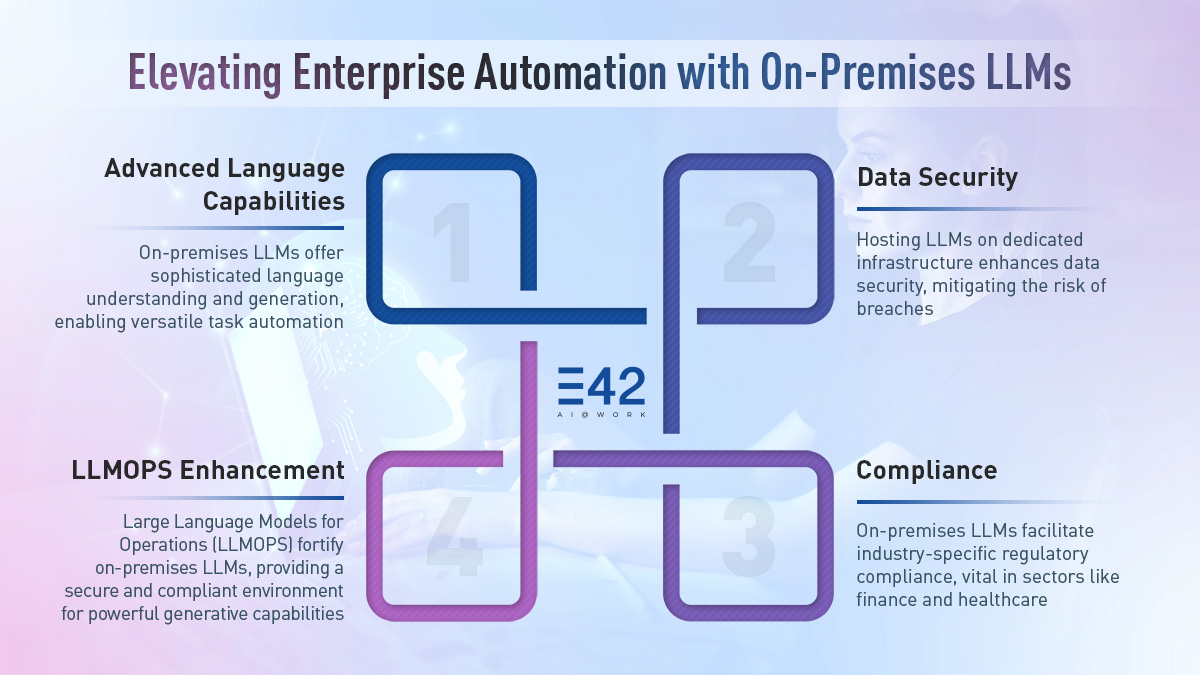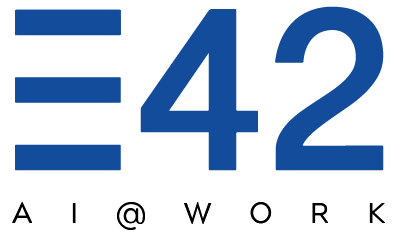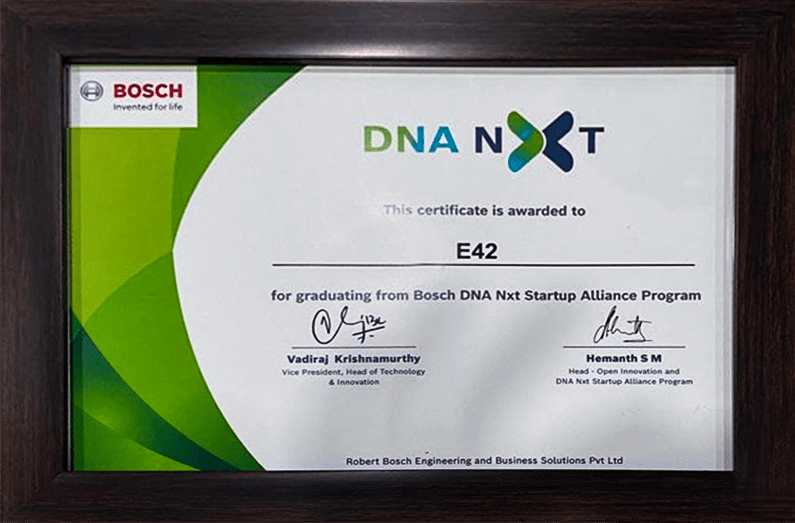Welcome to a world where artificial intelligence (AI) not only mirrors human thought processes but elevates them to new heights, introducing a level of creativity and dynamism comparable to the human mind. This is where Large Language Models (LLMs) emerge as the architects, shaping a future where AI doesn’t just analyze data but innovates, creates, and imagines across diverse domains.
This article explores the transformative role of Large Language Models in generative AI, highlighting their impact on industries and their potential to redefine creativity and innovation.
Here’s what this article covers:
What is Generative AI?
Generative AI lies at the core of autonomous content creation through sophisticated algorithms. Unlike traditional AI systems that primarily process and analyze data, generative AI takes it a step further by autonomously creating content. This creative autonomy is achieved through complex algorithms that enable the system to generate new, contextually relevant content, transcending predefined patterns.
The journey of generative AI commenced with rudimentary approaches and rule-based systems, setting the stage for advancements. Neural networks marked a pivotal shift, and LLM capabilities have further propelled this evolution, introducing a paradigm shift in content generation.
What are Large Language Models?
Large Language Models are advanced AI models that specialize in understanding and generating human-like text. They are trained on diverse datasets, enabling them to comprehend and generate language in a contextually relevant and coherent manner. LLMs in generative AI are revolutionizing the field of natural language processing, finding applications across various industries, and enhancing human creativity.
LLMs stand out from their predecessors due to a key differentiator—context. These models can process extended contexts, allowing for a more nuanced understanding of user requests. Moreover, the cutting-edge LLM technology is now multimodal, meaning it can adeptly handle various input formats, whether it’s text, video, or images.
Let’s delve deeper into LLMs and their capabilities:
Understanding Language
LLMs are AI models that are trained on vast amounts of data, which enables them to understand the nuances and intricacies of language. They can comprehend context, interpret meaning, and generate responses that are relevant and coherent.
Generating Human-like Text
Unlike traditional language models that focus on generating text based on statistical patterns, language learning in LLM enables them to understand and generate language in a way that’s much closer to how humans do using Natural Language Processing (NLP). Language models understand context, infer meaning, and generate responses or content that’s relevant to the given input.
Parameter-Rich Architectures
LLMs in generative AI surpass conventional models with an extensive number of parameters, offering a nuanced understanding of language intricacies and enabling large-scale text generation.
Diversification of Input Data
LLM capabilities transcend textual boundaries, incorporating multimodal capabilities that integrate diverse data types, such as images and text, broadening their scope and capabilities.
Large Language Models vs. Traditional AI: What’s the Difference?
When comparing Large Language Models with traditional AI models, it becomes evident that LLMs represent a significant leap forward in terms of functionality, scalability, and applications. While traditional AI models have laid the foundation for automation and data analysis, LLMs have redefined the boundaries of what AI can achieve, particularly in generative AI applications.
Functionalities
Traditional AI Models: Traditional AI models are typically rule-based or rely on structured data to perform specific tasks. They excel in well-defined, narrow applications such as classification, regression, and pattern recognition. For example, a traditional AI model might be used to predict customer churn based on historical data or classify emails as spam or not spam.
Large Language Models: LLMs, on the other hand, are designed to handle unstructured data and perform complex tasks such as natural language understanding, text generation, and context-aware decision-making. Unlike traditional models, LLMs can generate human-like text, translate languages, summarize content, and even write code. For instance, LLMs can draft entire articles, create personalized marketing campaigns, or generate creative storytelling content—tasks that are beyond the scope of traditional AI models.
Scalability
Traditional AI Models: Traditional AI models are often limited by their reliance on structured data and predefined rules. Scaling these models to handle diverse or complex tasks requires significant manual effort, including feature engineering and retraining. For example, a traditional AI model trained to analyze financial data might struggle to adapt to healthcare data without extensive retraining.
Large Language Models: LLMs are inherently scalable due to their ability to process vast amounts of unstructured data and adapt to new tasks with minimal fine-tuning. Their parameter-rich architectures enable them to generalize across domains, making them versatile tools for a wide range of applications. For instance, an LLM trained on general language data can be fine-tuned to generate legal documents, medical reports, or educational content without requiring a complete overhaul of the model.
The Significance of On-Premises Large Language Models (LLMs) in Generative AI

In the age of AI-led digital transformation, organizations are increasingly leveraging advanced technologies to streamline their operations, and one such innovation taking the spotlight is on-premises Large Language Models in generative AI. These models usher in a new era of advanced language capabilities, empowering organizations to automate an extensive array of tasks seamlessly.
What sets on-prem LLMs apart is their unparalleled commitment to data security. By hosting these models on their own infrastructure, organizations fortify their defenses against potential data breaches, ensuring a robust shield for sensitive information.
Moreover, in sectors like finance and healthcare, on-prem LLMs in generative AI serve as a compliance enabler, allowing organizations to navigate the intricate web of industry-specific regulations with ease. They align seamlessly with stringent standards and ensure that data practices adhere to the highest norms.
A standout addition to this paradigm is the advent of Large Language Models for Operations (LLMOPS). These frameworks act as force multipliers, enriching on-prem LLMs with additional capabilities— transforming them into formidable assets for organizations. LLMOPS not only elevate generative capabilities but also establish a secure and compliant environment for organizations to harness the full potential of LLMs. In essence, the integration of on-prem LLMs and LLMOPS marks a transformative journey for organizations, opening new horizons of automation, security, and compliance.
With the complexities of AI-driven automation, deploying on-prem LLMs, backed by enhanced security and enriched by LLMOPS, empowers the full utilization of advanced language models, making the most of their potential in the enterprise ecosystem. To optimize such a model for business requirements, precision tuning with proprietary data is crucial, especially in on-premises or private cloud deployments.
This tailored approach empowers the model to elevate complex workflows and refine business processes. Choosing this method significantly enhances the potential benefits of an LLM compared to alternative adoption strategies. A customized model, influenced by specific training data, excels in diverse tasks such as sentiment analysis, automated content creation, intelligent document processing, and more.
Real-World Applications of LLMs in Generative AI
LLMs transcend industry boundaries, finding applications in a myriad of sectors. Here are some key use cases:
AI-Powered Content Creation and Automation
Generative AI with Large Language Models enable automated content generation by producing high-quality text, from blog posts to social media captions, in seconds. They streamline creative processes by reducing manual effort and allowing teams to focus on strategy and refinement. For example, marketers can use LLMs to draft email campaigns or generate product descriptions, saving time while maintaining consistency and creativity.
Enhancing Customer Support with Chatbots
LLMs in generative AI power intelligent chatbots that understand and respond to customer queries in a human-like manner. They improve customer service interactions by providing instant, accurate, and personalized responses, reducing wait times. For instance, an LLM-powered chatbot can resolve billing inquiries, troubleshoot technical issues, and even upsell products seamlessly.
Personalized Recommendations and Marketing
LLMs analyze customer data to deliver tailored recommendations and marketing messages, enhancing engagement and conversion rates. By understanding individual preferences and behaviors, they create hyper-personalized experiences. For example, e-commerce platforms use generative AI with Large Language Models to suggest products, craft personalized ads, and send targeted promotions, driving customer satisfaction and loyalty.
Exploring Future Trends in Generative AI
As we delve into the future, the landscape of generative AI with LLMs is poised for continual evolution. Anticipated trends include enhanced multimodal capabilities, increased fine-tuning for specific industries, and breakthroughs in mitigating biases.
Industry-Specific Fine-Tuning
The future of LLM capabilities lie in their adaptability. There is an increasing focus on fine-tuning these models for specific industries to cater to their unique requirements and nuances. This involves customizing models to better serve sectors like healthcare, finance, legal, and others, ensuring more accurate and industry-relevant content generation.
Bias Mitigation Breakthroughs
As we move forward, we anticipate significant breakthroughs in addressing and mitigating biases within LLMs. This involves the development of advanced algorithms and methodologies to identify and rectify biases in training data. The goal is to ensure fair and unbiased content generation, promoting the ethical and responsible use of LLMs in generative AI.
Quantum Leap in Model Size and Complexity
The evolution of LLMs in gen AI is expected to take a quantum leap—future models are predicted to handle even more parameters and intricate architectures. This will involve the exploration of models that can capture an unprecedented level of detail and intricacy, pushing the boundaries of what LLMs can achieve in terms of content generation.
Conclusion
The fusion of generative AI with LLMs unfolds a panorama of sophisticated output, highlighting the vast potential for AI to redefine the boundaries of creativity. As the field evolves, the role of LLMs in generative AI stands as a testament to the symbiotic relationship between technology and creative expression. The meticulous approach to ethical considerations and human oversight ensures responsible and innovative advancements in content generation.
Looking ahead, the journey of LLMs in generative AI opens doors to a synergy where human ingenuity collaborates with machine intelligence to create fantastic outcomes. The ongoing exploration of this synergy promises a conscientious integration that respects ethical boundaries and human values. The future of generative AI, marked by the continuous refinement and augmentation of LLMs, holds the potential to elevate creativity and innovation to unprecedented heights, shaping a landscape where the boundaries between human and machine creativity become increasingly blurred.
Make your Enterprise Intelligent with E42
E42 is a no-code Cognitive Process Automation (CPA) platform to create multifunctional AI co-workers equipped with generative AI capabilities that automate enterprise functions across verticals and domains ranging from automobiles and BFSI to telecom, manufacturing, and more. By leveraging LLM technology and scalability, and minimizing the human workload, E42 is disrupting the enterprise automation space while delivering a hassle-free user experience. To kickstart your enterprise automation journey, write to us at interact@e42.ai!
Frequently Asked Questions
On-premises LLMs offer enhanced data security and compliance, making them ideal for industries with strict regulatory requirements.
Large Language Models in generative AI excel in handling complex tasks and unstructured data, offering superior scalability and adaptability compared to smaller AI models.
While LLMs require significant computational resources, ongoing advancements aim to optimize energy efficiency.
Businesses fine-tune LLMs in generative AI using proprietary data, ensuring the models are tailored to meet specific industry requirements.
LLMs deployed on-premises ensure data security by keeping sensitive information within the organization’s infrastructure.



